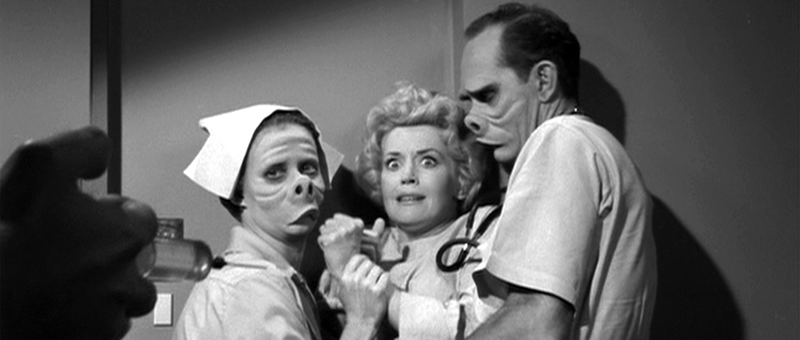
Editor’s note: This essay is offensive and subjective and, at points, gets downright ugly.
JERRY: Elaine, what percentage of people would you say are good looking?
ELAINE: Twenty-five percent.
JERRY: Twenty-five percent, you say? No way! It’s like 4 to 6 percent. It’s a twenty to one shot.
ELAINE: You’re way off.
JERRY: Way off? Have you been to the motor vehicle bureau? It’s like a leper colony down there.
ELAINE: So, what you are saying is that 90 to 95 percent of the population is undateable?
JERRY: UNDATEABLE!
What could possibly be the most underrated ism? It is not what you think. It is how you look, how you appear to others.
This is about ugliness, as defined by immature, superficial individuals … which includes most of us, whether we admit or not.
Clearly, beauty bias pales by comparison to racism, sexism, ageism, ableism and other forms of discriminatory, oppressive and abusive behavior. Yet, because it is subjective and easy to mask, discrimination based on physical appearance persists nearly unabated, with impunity.
“LOOKISM” IS REAL, UGLY
Merriam-Webster Dictionary defines lookism as “prejudice or discrimination based on physical appearance and especially physical appearance believed to fall short of societal notions of beauty.” Lexicographer John Ayto cited The Washington Post Magazine in 1978 with the earliest use of the word, reporting that fat people coined “lookism” to define the discrimination they faced.
For centuries and remarkably up until the 1970s, a number of countries and cities enforced “ugly laws,” as the ordinances were known colloquially, instituted to keep the public from being exposed to unsightly beggars and maimed, deformed or otherwise disgusting looking individuals.
Lookism remains pervasive in our personal and professional lives, according to a number of studies by sociologists and economists. Physical attraction may forever influence the “eye of the beholder” within romantic relationships, yet it becomes a public concern and potentially legal issue when the discriminating beholder holds a position of authority. Research confirms such bias manifests in job hiring and earning, approval of loan applications, acquittals by juries, and teachers’ grades for students.
Physical attraction is baked into our DNA, our collective unconscious, which explains why even the most decent among us find it difficult to override this particular form of prejudice. While rude whistles and comments like “Hey, good-lookin’” overtly perpetuate the beauty bias, social media offers discriminating viewers both distance and anonymity to exploit their superficiality. The “swipe left” culture, perpetuated by Tinder and other online dating sites, adds an insidious element to already biased first impressions.
A CONTEST BETWEEN “UNDATEABLE” AND “BREATHTAKING”
The platitudes and aphorisms — “beauty is only skin deep,” “don’t judge a book by its cover,” “beauty is in the eye of the beholder” — are wonderful, but unlikely to change minds, let alone transform culture.
So, is there hope between the pessimism of Jerry Seinfeld’s pronouncement on the tiny percentage of dateable people and the Pollyannaish impression of the sitcom’s handsome doctor, who explained to Elaine that every baby is breathtaking?
Decades before “Seinfeld,” another breakthrough TV series took a stab at righting the social injustice of superficiality.
The classic “Twilight Zone” episode titled “Eye of the Beholder” (1960) showed us how subjective beauty can be. A woman is forced to go through multiple reconstructive facial treatments to make her “pitiful twisted lump of flesh” look normal. The dual conceit of the story comes in the end when the bandages around her head are unwrapped to reveal an “attractive” woman, whose unchanged appearance horrifies the roomful of doctors, nurses and others, whose swollen eyes and lips and wrinkled noses with large nostrils make all of them look like “pig people.”
As with most prejudices, the solution to the ugly bias of lookism lies in the gray area between acknowledging its existence and making such existence irrelevant. There’s progress, but it’s slow — one step forward (rejecting “anti-aging” cosmetics, for example) for every two-plus steps backward (the Kardashians). Along the way we can choose: to look at beauty as a contest … or to behold beauty as indiscriminately as humanly possible.







Fabulous post. Definitely something to think about. Great old show references.
Some where people will understand, I am not an animal.
One link to your ageism focus, you can become more beautiful with age if you have beauty from within….I have seen that in my career as a Geriatrician.